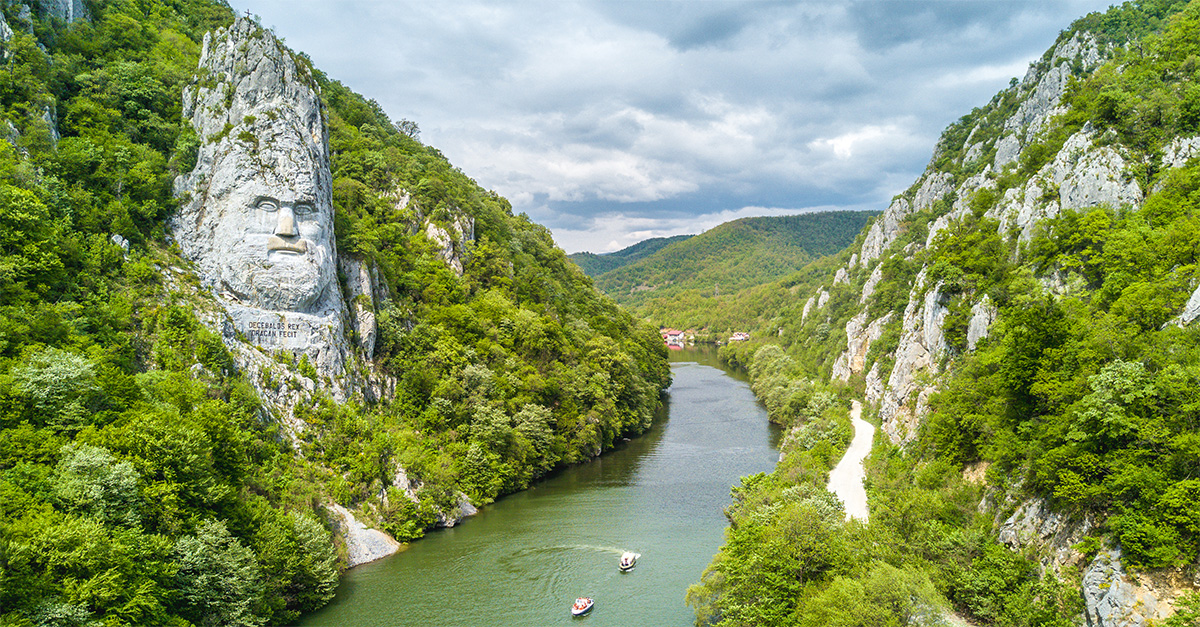Don’t get confused by Egypt’s ancient history, says Katie McGonagle.
Click here to download and save as a PDF.
Pyramids, temples and the tomb of Tutankhamun – there are some obvious highlights to any Nile cruise, and these flagship sites are top of the list.
But would you know Karnak from Kom Ombo, why the tomb of Ramesses V and VI deserves more time than that of the better-known boy king, or what to say to customers who think once they’ve seen one temple, they’ve seen them all?
Here’s a rundown of the key sites on any Nile itinerary, so you’ve got the answers at your fingertips and can sell this classic cruise with confidence.
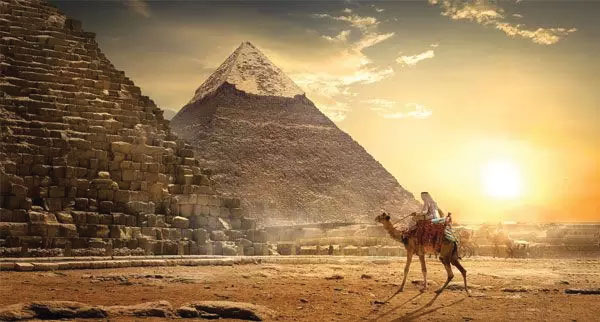
1 Great Pyramid
Where: Giza, near Cairo
When: Finished 2560BC
Why go: To gaze in awe at the only one of the seven wonders of the world still standing, while trying to comprehend how an ancient civilisation managed to build a structure taller than the London Eye.
It was the funerary temple – pyramids were used to lay Egyptian rulers to rest before tombs became the more common way to honour the dead – for fourth-dynasty pharaoh Khufu, set among a network of buildings that formed part of the funeral rites.
“The passageway inside the pyramid runs steeply upwards to the chamber containing the pharaoh’s sarcophagus, long since stripped of its contents.”
The equally iconic Sphinx, a colossal sculpture of a lion’s body and man’s head – said to be modelled on then-ruler Khafre – is just a few minutes away.
Look out for: The passageway inside the pyramid, which runs steeply upwards to the chamber containing the pharaoh’s sarcophagus, long since stripped of its contents. Visitors can go inside, though it’s best avoided by anyone with claustrophobia or dodgy knees.
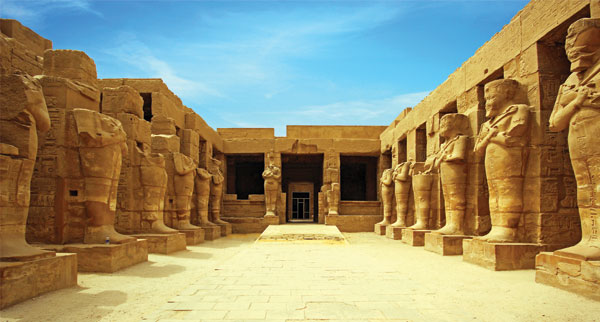
2 Karnak temple complex
Where: A mile north of Luxor city
When: 2055BC to AD100
Why go: Even by Egyptian standards, this temple complex is enormous, with more than 20 temples and dozens of different deities carved into its walls. It’s another feat of engineering – just ask guides how workers reached its 22m-high columns to create such intricate reliefs – that was added to over several centuries. Its atmospheric interior has even acted as a setting for films including Death on the Nile, Goldeneye and Indiana Jones.
“Even by Egyptian standards, this temple complex is enormous, with more than 20 temples and dozens of different deities carved into its walls.”
Look out for: The tallest surviving obelisk in Egypt, a lofty 25m and 300 tons, so huge it had to be brought by boat from Aswan. In antiquity, it was topped with electrum, an alloy of silver and gold, all the better for reflecting the rays of the sun.
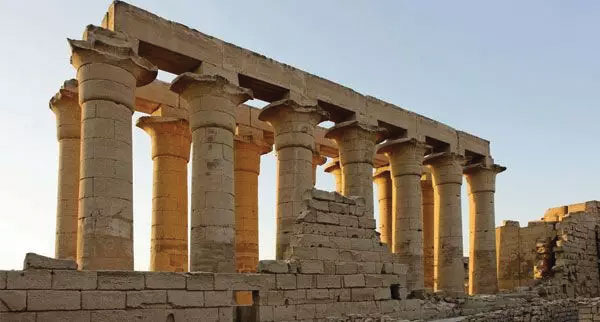
3 Luxor temple
Where: Luxor
When: 1600-1100BC
Why go: Starting to suffer from ‘temple fatigue’? Don’t worry, Luxor is interesting enough to banish thoughts of sore feet, especially if you see it lit up at night to atmospheric effect. The giant statues of Ramesses II at the entrance alone make it worth a visit.
“A guide will help pick out the blurring of lines between ancient Egyptian and ancient Greek cultures in the art, architecture and worship of gods on display inside the temple.”
Alexander the Great is said to have been crowned here, and a guide will help pick out the blurring of lines between ancient Egyptian and ancient Greek cultures in the art, architecture and worship of gods on display inside the temple. An Arab village later grew up on top of the ruins, and there’s still a working mosque on site.
Look out for: The avenue of sphinxes – 300 on each side – that lines the two-mile stretch from Karnak to Luxor temples, uncovered only in 2010.
4 Valley of the Kings
Where: West Bank of Luxor
When: 1550-1070BC
Why go: If Tutankhamun’s tomb is what clients have been waiting for, it’s here. The boy king’s burial place is certainly worth seeing, but it’s a fraction of the size of some of the 60-plus tombs scattered across this site, famed more for its dramatic discovery all but untouched (while other tombs had been stripped of many of their riches over the centuries), than its original grandeur. So allow time for other burial chambers too – there are 10 open at any one time, on rotation to minimise damage – including that of Ramesses V and VI, covered from floor to ceiling in images depicting the journey to the underworld.
“Allow time for other burial chambers too – there are 10 open at any one time, on rotation to minimise damage – including that of Ramesses V and VI.”
Look out for: The impressive astronomical ceiling in the tomb of Ramesses V and VI, where sky goddess Nut demonstrates the cycle of day and night.
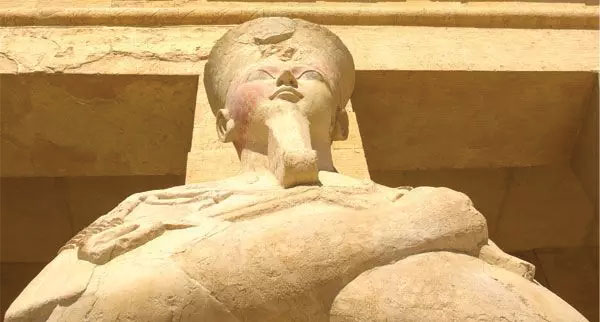
5 Funerary temple of Hatshepsut
Where: Luxor’s West Bank
When: About 1445BC
Why go: Built to commemorate Egypt’s female pharaoh, Hatshepsut, this three-tiered temple is impressive enough on its own. But ask a guide about the human history behind its construction – the temple architect Senenmut is said to have been Hatshepsut’s lover – and it gets even more interesting.
“Ask a guide about the human history behind its construction – the temple architect Senenmut is said to have been Hatshepsut’s lover – and it gets even more interesting.”
Look out for: The carvings depicting a journey to Punt, a kingdom on the Red Sea possibly around modern-day Somalia, to exchange gold for silver, and ostrich feathers for ebony.
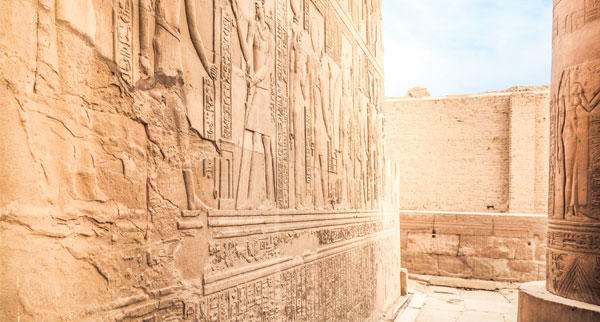
6 Temple of Kom Ombo
Where: Kom Ombo, 25 miles north of Aswan
When: 180-47BC, with later Roman additions
Why go: Unusually, this temple is dedicated to two gods – the crocodile god Sobek in the southern half, and falcon god Horus the Elder to the north – with each half a mirror image of the other. There are still traces of the coloured egg-white dyes used to bring the relief carvings to life in bright reds and blues.
“This temple is dedicated to two gods – the crocodile god Sobek in the southern half, and falcon god Horus the Elder to the north – with each half a mirror image of the other.”
Look out for: The odd but interesting museum of mummified crocodiles discovered in a crypt underneath the temple. They’re kept in good company with fish, dogs, baboons and a gazelle’s head all mummified for posterity.
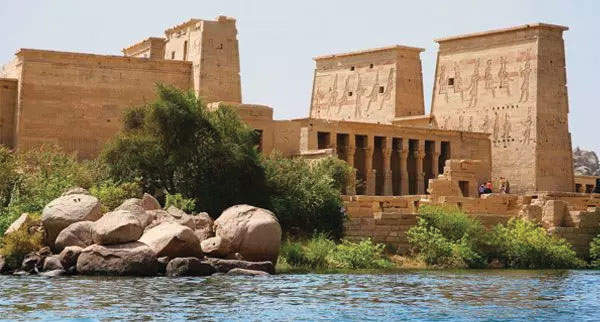
7 Philae temple
Where: On Agilkia island, four miles south of Aswan
When: 380-362BC
Why go: This temple dedicated to the Egyptian goddess Isis is grand enough on its own, but surrounded by the sparkling blue waters of the River Nile, it’s even more of a treat. Grand carvings of Isis grace the entrance, but step inside and it feels much more intimate, with hieroglyphs telling the goddess’s story. There are even signs of early Christian worship – a Coptic cross and a tabernacle – thought to date from around AD400 and graffiti left behind by Napoleonic soldiers. If clients are here in the evening, suggest booking a ticket to the sound and light show – many temples offer them, but this one is the most engaging.
“There are even signs of early Christian worship – a Coptic cross and a tabernacle – thought to date from around AD400 and graffiti left behind by Napoleonic soldiers.”
Look out for: The water mark that shows how deeply the temple was submerged in its original home, on Philae island, before being moved to its current location in the 1980s, when construction of the Aswan High Dam flooded the island altogether.
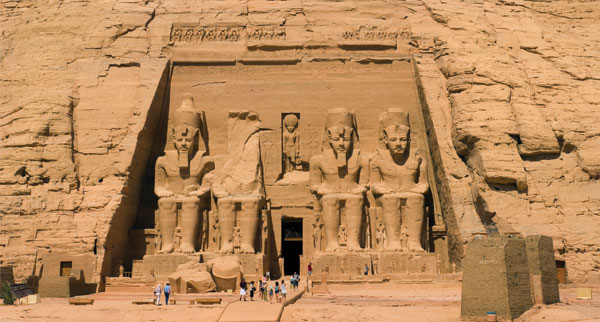
8 Abu Simbel temples
Where: Lake Nasser, 175 miles south of Aswan
When: 1264BC to 1244BC
Why go: Most cruise operators fly passengers down from Aswan to see the twin temples of Abu Simbel – monuments to Ramesses II and queen Nefertari – and it’s worth going the extra distance. Colossal doesn’t quite cover the sheer size of the 20m-high statues of the pharaoh that man the entrance, carved directly out of the stone. Likewise Nefertari’s temple, where the pair appear – rarely for ancient Egypt – at the same gigantic size. Like Philae, the temples were moved piece by piece in the 1960s to preserve them from water damage.
“Colossal doesn’t quite cover the sheer size of the 20m-high statues of the pharaoh that man the entrance, carved directly out of the stone.”
Look out for: The row of 22 baboons that crowns the top of the facade, putting their arms up towards the rising sun.
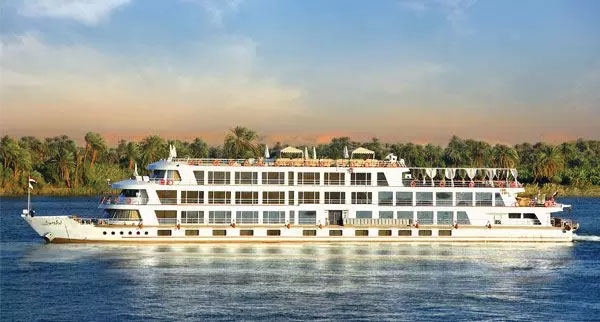
Sample product
Abercrombie & Kent has a six-night Highlights of Egypt trip, which travels to Cairo, Aswan, Kom Ombo, Edfu and Luxor. Prices start at £1,695 per person, which includes flights, accommodation, transfers, guiding and a cruise onboard Sun Boat IV.
abercrombiekent.co.uk
Riviera Travel offers the 15-day Wonders of the Nile – From Cairo to Aswan. Prices start at £2,469 including flights, 14 nights on board Mövenpick Darakum, all meals, guided tours and entrance fees.
rivieratravel.co.uk
Read more
What to expect on an escorted tour of Egypt’s ancient tombs and temples
Sail from Luxor to Aswan on a Nile river cruise
Eight of the best desert adventures




